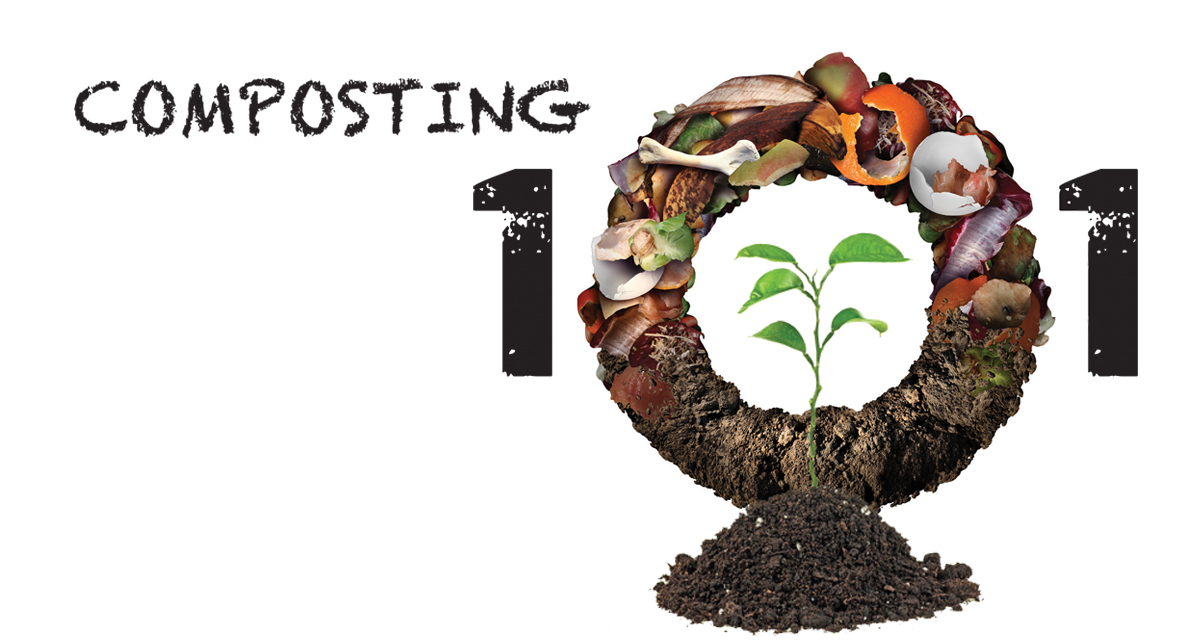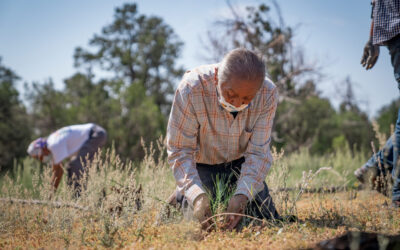A stay-at-home pandemic has made gardening more popular than ever this year. It is essential to our own resourcefulness, a rewarding teaching tool for children and just plain good for your health and our environment when we can source hyper local (the backyard). But while some of you out there are starting to master the planting and growing of a garden, there is something that can enhance your new hobby in a similarly rewarding way: composting.
Composting can improve your garden’s soil structure with a great source of plant nutrients. It is beneficial for the vegetable garden but can also work great on perennials, shrubs, trees, bulbs and even your lawn. And it is cheap to start, free to continue and a vital way to individually cut down on waste in the landfills (half or more of our household waste is compostable!).
The nuts and bolts: Your food waste, lawn debris, grass clippings, rotted manure, sawdust or wood shavings, and paper can all be broken down to create a rich compost that veggies love. Decomposition of these materials in the right environment can happen in as little as two weeks, and an ongoing compost pile can provide a free source of compost for years to come.
Heat, moisture, organic matter and oxygen are all vital parts of the compost pile. The best environment for your compost is one that has carbon-rich materials (most often brown in color—leaves, sawdust, shredded paper), high-nitrogen materials (fresh grass clippings, kitchen scraps and other moist green matter), water (with the goal of keeping your compost moist, not wet) and oxygen, which will let the organisms work to break down the other materials.
To start your compost pile:Combine one-part carbon-rich material with one part high-nitrogen material and one-part garden soil or food scraps. Spread in 3- to 4-inch-deep layers adding water, if needed. You can purchase an enclosed container at your local garden store or cover your pile with a tarp.
The success of your compost pile will depend much on the mixture you put into it. The rule of thumb is three-parts brown stuff to one-part green stuff. If you have too much of the brown (carbon-rich) and not enough of the green (nitrogen-rich) it may take years for your pile to decompose. On the other hand, if you have too much nitrogen and not enough carbon present, your pile will be soggy and stinky and still decompose very slowly.
There are commercial additives that you can use to help your compost pile, especially at set-up: compost starter, bone, blood or alfalfa meal, fish waste or manure. Your compost pile can get hot—a byproduct of all those microorganisms breaking down the organic matter—and getting your pile hot can help compost finish more quickly. It will also kill off weeds. Commercial activators can help raise your compost pile’s temperature.
Turning your compost is another factor. If you turn it regularly, you will speed up decomposition, but it is not necessary. To keep your pile well aerated (it needs that oxygen), build it on a raised platform, like a pile of branches, use a bin with air vents in the sides or insert perforated 4” plastic piping in the center of your pile. Discarded wood pallets can make a nice, cheap compost bin, if you have access to them.
By the way, you will know when your compost is ready when it is a dark, rich, crumbly material. Often, you can pull away the finished compost at the bottom of your pile and continue to add new material to the top with many commercial composters.
For more information, we enjoyed these online resources: Fcgov.com/recycling/composting
Gardeners.com/how-to/all-about-composting /5061.html
Gardeningchannel.com/composting-101
COMPOSTING CHEAT-SHEET
CAN BE COMPOSTED
• Kitchen scraps
• Over-ripe fruits and veggies
• Leaves, grass-clippings, weeds
• Wood chips, cardboard and shredded paper can be composted but they will take much longer to break down.
SHOULD NOT BE COMPOSTED
• Waste from carnivores and omnivores (dogs, cats, humans, pigs)
• Meat and meat-based fats
• Very thick, heavy matter, like office paper, cardboard and wood chips. These will decompose but will take much longer.
If it stinks: And is wet, add more brown material: leaves, shredded newspaper.Add more oxygen by turning or using a tool to aerate.
If it looks dry:Water it regularly.Cover with a tarp or sheet to protect it from dry Colorado air.







